Watch How a Mold Flipper Smoothly Flips a 10-Ton Heavy Mold
Flipping a 10-ton mold is a high-stakes operation. In many plants, I still see this done with overhead cranes and chains. It's slow. It's dangerous. The heavy, swinging load puts immense stress on your equipment and your team. One slip, one moment of miscommunication, and you could face catastrophic equipment damage, costly downtime, or worse, a serious injury. This constant risk and inefficiency is a hidden cost that eats away at your profits and puts your people in harm's way. A modern steel mill cannot afford to rely on such outdated and risky methods.
A mold flipper smoothly handles a 10-ton mold by using a powerful, purpose-built mechanical or hydraulic system. The machine securely clamps the mold onto a stable platform. Then, a controlled drive system rotates the entire platform 90 or 180 degrees. This process is precise, automated, and happens within a contained footprint, eliminating the dangers of swinging loads associated with cranes. It is the safest and most efficient method for repositioning heavy molds.
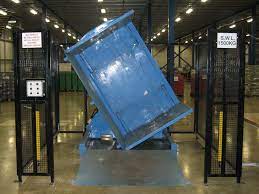
You have now seen the video and understand the basic function. But a smart owner like you, Javier, knows that a machine is more than just its function. It is an investment. You need to understand why this isn't just a piece of equipment, but a strategic tool that addresses your biggest challenges, from cost control to production stability. Let’s break down the real value this solution brings to a modern steel mill.
Why is a dedicated mold flipper essential for modern steel mills?
Your plant floor is a complex ecosystem. Every process is linked. A bottleneck in one area creates delays everywhere else. You might be using your multi-million dollar overhead cranes for a task they were not designed for: the awkward, dangerous process of flipping heavy molds. This ties up your crane, creates a safety hazard, and slows down your entire production line. You are constantly battling to increase uptime and lower operational costs, but this single, inefficient step is working directly against those goals.
A dedicated mold flipper is essential because it transforms a high-risk, time-consuming task into a safe, fast, and automated process. It directly addresses the core challenges of a steel mill by increasing operational uptime, protecting valuable assets like molds and cranes, and drastically improving workplace safety. This isn't an operational expense. It is a direct investment in higher throughput and long-term profitability.
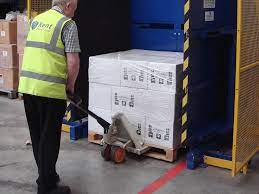
Deeper Dive: The Strategic Value Beyond the Flip
For a CEO like Javier, every decision must be backed by a clear return on investment. The value of a mold flipper goes far beyond simply turning something over. It integrates directly into your primary goals of boosting efficiency, ensuring safety, and driving down costs. Let's analyze this from a strategic perspective.
Asset Protection and Quality Control
Your molds are not just chunks of steel. they are precision-engineered tools that cost tens of thousands, or even hundreds of thousands, of dollars. When you use chains and a crane to flip them, you introduce uncontrolled forces.
- Surface Damage: Chains can scratch, dent, or gouge the mold's surface. These imperfections are then transferred to your final product, leading to quality rejects, rework, or unhappy customers.
- Structural Stress: The awkward lifting points and shock loads from crane operations can cause micro-fractures or warping in the mold over time, shortening its lifespan.
A mold flipper, in contrast, uses wide, flat, and often padded surfaces to clamp the mold. The turning motion is smooth and controlled. It handles your expensive asset with the care it deserves. This protects your investment and ensures the quality of your output.
Unlocking Production Capacity
Think about the time it takes for a team to flip a mold with a crane. You need a crane operator and at least one or two people on the ground to rig the chains and guide the load. The entire process might take 15 to 30 minutes, and during this time, a large area of your workshop is a "no-go" zone for safety reasons. A mold flipper can complete the same task in under 5 minutes with a single operator.
Let's do some simple math. If you save 20 minutes per flip and perform 5 flips per day, you save 100 minutes of production time daily. Over a 300-day work year, that is 500 hours of recovered time. This is time your crane can be used for its primary purpose—moving materials—and your production line can keep running. This directly contributes to your goal of achieving 95% equipment uptime.
| Feature | Crane & Chains Method | Dedicated Mold Flipper | Impact on Goals |
|---|---|---|---|
| Time per Flip | 15-30 minutes | < 5 minutes | Increases产能利用率 (Capacity Utilization) |
| Personnel | 2-3 people | 1 operator | Reduces人工成本 (Labor Costs) |
| Mold Damage Risk | High | Very Low | Improves产质量量 (Product Quality), Lowers Costs |
| Safety Risk | High | Very Low | Enhances Workplace Safety |
| Area Occupancy | Large "no-go" zone | Small, contained footprint | Optimizes Floor Space |
This isn't just about efficiency. It is about fundamentally changing a core process from a manual, high-risk bottleneck into a streamlined, automated component of your production line.
How does a mold flipper enhance operational safety and reduce risks?
As a plant owner, the safety of your people is your number one responsibility. The most dangerous operations are often those involving heavy, suspended loads. A 10-ton mold hanging from a crane is a massive liability. A snapped chain, a moment of operator inattention, or a miscommunication with the ground crew can lead to a tragedy. The paperwork, the investigations, the stop-work orders, and the impact on team morale are devastating, far beyond any financial cost. You know this risk exists every single day.
A mold flipper enhances operational safety by fundamentally changing the nature of the task. It takes the operation from the open air, where a load can swing and fall, and contains it within a stable, engineered machine. It eliminates the most significant risks by automating the process and removing personnel from the immediate danger zone. The entire flip happens on the ground, in a controlled, predictable sequence, virtually eliminating the risk of a dropped load.
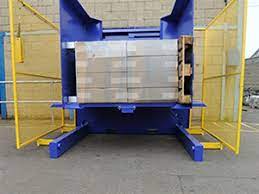
Deeper Dive: An Engineered Approach to Risk Mitigation
A proactive safety culture is built on engineering controls, not just on telling people to "be more careful." A mold flipper is a prime example of an engineering control that designs the risk out of the process. Let's break down the specific ways it mitigates the hazards you face.
Eliminating Suspended Load Hazards
The single greatest risk in the crane method is the suspended load. The entire weight of the mold is dependent on chains, hooks, and the crane's braking system. A mold flipper works differently.
- Stable Base: The machine is securely bolted to the factory floor. It has a low center of gravity. The load is never "suspended" in free space; it is always supported by the machine's robust frame.
- Controlled Rotation: The rotation is powered by a hydraulic or electromechanical drive system. It moves at a slow, constant speed. There is no swinging, jerking, or potential for momentum to take over.
This change alone reduces the risk profile of the operation by an order of magnitude.
Built-in Safety Interlocks and Systems
Modern mold flippers are not just brute force machines; they are intelligent systems with multiple layers of safety. This is something an engineer like you can appreciate.
- Pressure-Relief Valves: In hydraulic systems, these prevent over-pressurization that could damage the system or drop the load.
- Mechanical Locks: Many designs include physical locking pins or brakes that engage automatically to prevent rotation in case of a power failure.
- Limit Switches: These sensors ensure the machine does not rotate beyond its designed 90 or 180-degree range.
- E-Stops: Emergency stop buttons are placed in easily accessible locations to immediately halt all motion.
- Warning Systems: Audible alarms and flashing lights operate during the rotation cycle, alerting everyone in the vicinity that the machine is in motion.
These are not optional extras. They are core design features that create a failsafe environment.
| Risk Factor | Crane & Chains Method | Dedicated Mold Flipper | How Risk is Mitigated |
|---|---|---|---|
| Dropped Load | High | Extremely Low | Load is contained and supported, not suspended. |
| Personnel Proximity | High | Low | Operator stands at a control panel, away from the moving parts. |
| Human Error | Medium-High | Low | Automated cycle removes miscommunication risk. |
| Equipment Failure | Medium | Low | Redundant safety features (locks, valves) are built-in. |
Investing in a mold flipper is a clear, definitive statement that you are prioritizing your team's safety through superior engineering, not just policies and procedures. It is a tangible solution to one of the biggest risks in your steel mill.
What are the key mechanical and control features of a reliable mold flipper?
You have decided that you need a mold flipper. Now you face a new challenge: choosing the right one. Not all machines are created equal. As an experienced engineer and business owner, you know that buying cheap equipment is often the most expensive mistake you can make. A poorly designed flipper could become a new source of downtime and maintenance headaches, defeating the entire purpose of the investment. You need to know what to look for under the hood.
A reliable mold flipper is defined by three core components: a heavy-duty, over-engineered frame; a powerful and smooth drive system; and an intelligent, user-friendly control system. The frame must be able to withstand forces far greater than the mold's weight. The drive system must provide consistent torque without jerking. The control system must ensure safe, repeatable operation every single time.
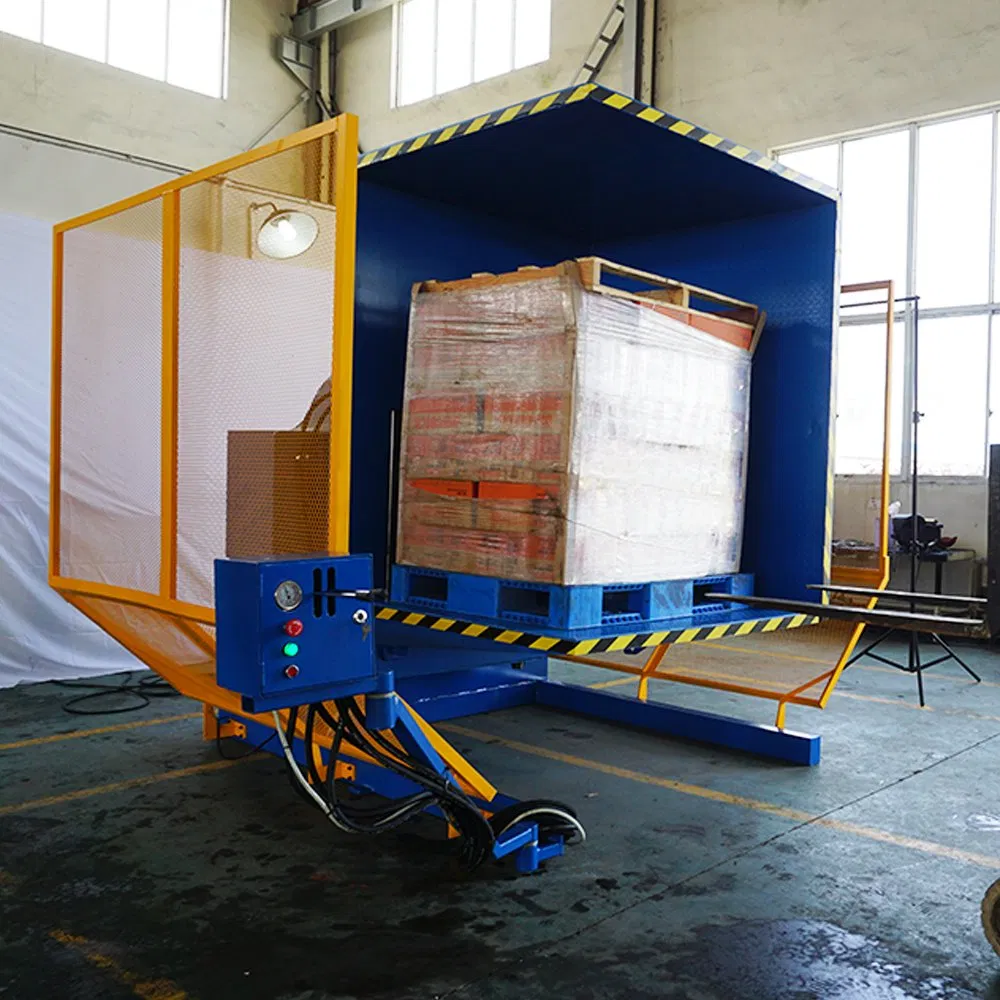
Deeper Dive: A Buyer's Guide for the Technical CEO
When you evaluate a potential supplier, you need to ask the right questions. Your background in mechanical engineering gives you an advantage. Let's break down the critical elements you should scrutinize.
The Foundation: Frame and Structure
The frame is the backbone of the machine. Do not be swayed by a fancy paint job.
- Material and Construction: Insist on seeing the specifications. It should be built from high-strength structural steel (like Q345 or equivalent). Look for clean, deep welds, not spot welds. A heavy machine is a stable machine. Ask for the total weight of the flipper.
- Design and Analysis: A serious manufacturer uses Finite Element Analysis (FEA) software during the design phase. This digitally simulates the stresses on the frame to identify and eliminate weak points before a single piece of steel is cut. Ask the supplier to show you their FEA reports. This separates the professional engineers from the simple fabricators.
The Powerplant: Drive System Comparison
The drive system determines the machine's performance and reliability. The two main types are electromechanical and hydraulic.
| Feature | Electromechanical Drive | Hydraulic Drive | Key Considerations for Javier |
|---|---|---|---|
| Mechanism | Electric motor with a heavy-duty gearbox and chain/gear drive. | Hydraulic power pack with cylinders and motors. | Hydraulics offer immense power for extremely heavy loads (>50 tons). Electromechanical is cleaner and requires less maintenance for typical mold weights. |
| Control | Excellent. Variable Frequency Drives (VFDs) allow for soft start/stop and precise speed control. | Good, but can be prone to slight "jerking" if not well-designed. | For smooth, precise handling of valuable molds, a VFD-controlled electromechanical system is often superior. |
| Maintenance | Lower. Primarily requires gearbox lubrication and motor checks. No oil leaks. | Higher. Requires regular checks of hydraulic fluid, filters, hoses, and seals. Potential for leaks. | This directly impacts your maintenance budget and your goal of reducing operational costs. |
| Energy Use | More efficient. Consumes power only during rotation. | Less efficient. The hydraulic pump may run continuously or cycle frequently. | This ties into your goal of reducing unit energy consumption by 10%. |
The Brain: Controls and Integration
The control system is where safety and functionality meet.
- PLC and HMI: The machine must be controlled by a reputable Programmable Logic Controller (PLC) like Siemens, Allen-Bradley, or Mitsubishi. This ensures reliability and makes it easier for your team to service. The operator should have a clear Human-Machine Interface (HMI) – a touchscreen panel that shows the machine's status and any fault codes.
- Integration Capability: This is critical for your digitalization goals. Ask if the PLC can communicate with your plant's Manufacturing Execution System (MES). Can it send data on cycle times, operating status, and faults? A machine that can be integrated into your data ecosystem is a valuable asset for achieving comprehensive production visualization.
By focusing on these three areas—frame, drive, and controls—you can make an informed decision and choose a strategic partner, not just a supplier.
How does integrating a mold flipper impact overall productivity and maintenance costs?
Every capital investment must be justified on the P&L statement. You might look at a mold flipper and see a new asset to purchase, install, and maintain. You might worry that it's just another machine that can break down. The real question is not "What does it cost?" but "How does it reduce my total operational cost and increase my revenue?" The impact is felt far beyond the machine's own footprint.
Integrating a mold flipper has a powerful dual effect: it directly boosts productivity by slashing non-value-added time, and it indirectly cuts maintenance costs across multiple areas. It transforms a slow, manual process into a fast, automated one, allowing you to produce more with the same assets. At the same time, it prevents costly damage to your molds and reduces wear and tear on your critical overhead cranes.
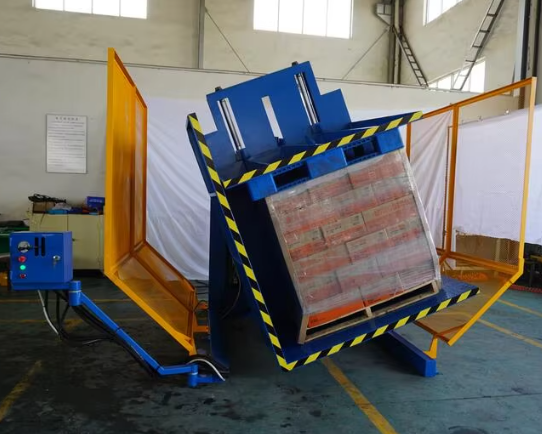
Deeper Dive: The Ripple Effect on Your Bottom Line
For a business owner focused on lowering operating costs by 8%, the secondary and tertiary effects of an investment are just as important as the primary ones. A mold flipper creates a positive ripple effect across your entire operation.
Quantifying the Productivity Gain
We've already established the time savings. Let's translate that into financial terms.
- Increased Throughput: If your plant's revenue is, for example, $50,000 per hour of operation, the 500 hours saved per year (from our previous calculation) translate into a significant revenue opportunity. The machine pays for itself by allowing you to produce and sell more.
- Optimized Labor: You are reallocating labor from a low-skill, high-risk task (rigging chains) to more value-added activities. The one operator at the flipper's control panel is more productive than the three-person team he or she replaces. This helps reduce labor costs per ton of steel produced.
Drastic Reduction in Maintenance and Repair Costs
This is a critical area where the flipper delivers hidden savings. Your maintenance budget is likely under pressure.
- Mold Preservation: The cost to repair a damaged mold can be enormous, not to mention the production downtime while it's out of service. By eliminating damage from chains and rough handling, the flipper extends the life of your molds and drastically cuts your mold repair budget.
- Crane Longevity: Overhead cranes are designed for vertical lifting, not for the complex side-loading and shock-loading that occurs during a flip. This misuse accelerates wear on the crane's motors, brakes, and cables, leading to more frequent and expensive maintenance. By dedicating the flipping task to the proper machine, you preserve the health of your most critical lifting assets.
- Predictive vs. Reactive Maintenance: The maintenance for a mold flipper (e.g., scheduled lubrication, filter changes) is predictable and can be planned. This fits perfectly with your goal of implementing predictive maintenance. It is far cheaper than the reactive, emergency repairs needed when a crane fails or a mold is unexpectedly damaged.
| Cost Center | Without Mold Flipper | With Mold Flipper | Impact on 8% Cost Reduction Goal |
|---|---|---|---|
| Mold Repairs | High and Unpredictable | Low and Predictable | Direct contribution to cost savings. |
| Crane Maintenance | Accelerated wear, high costs | Normal wear, lower costs | Direct contribution to cost savings. |
| Lost Production | High due to slow process and downtime | Minimal | Increases revenue potential, improving profit margin. |
| Labor for Flipping | High (3-person team) | Low (1 operator) | Direct contribution to labor cost savings. |
| Insurance/Safety Costs | Potentially higher due to risk | Potentially lower due to engineered controls | Indirect contribution to overhead reduction. |
When you analyze the total cost of ownership, the mold flipper is not a cost center. It is a cost-reduction engine. It is a critical tool for achieving your target of an 8% reduction in overall operating costs while simultaneously increasing your capacity.
My Insight
I have been in this industry for a long time. I started on the factory floor, just like many of your team members. I then built my own factory. I know the pressure you are under, Javier. I know the feeling of looking at a P&L statement and seeing energy and maintenance costs chip away at your hard-earned profits.
I remember visiting a steel wire plant in Monterrey years ago. The owner was a man much like you—sharp, experienced, and very careful with his money. He was using a crane to flip his wire coils, and his team was fast, I'll give them that. He told me, "Vincent, my people are professionals. We don't have accidents. A new machine is a cost I don't need."
I didn't argue. I just asked him to do one thing: for one week, track the exact time from when the crane stopped its previous job to when it started its next one after the flip was done. Also, track the small repairs and product rejects from coils that got slightly deformed by the C-hook used for flipping.
A month later, he called me. He was shocked. The "quick" flip was a 20-minute bottleneck every single time. The small damages were costing him thousands per month in rework and scrap. He wasn't seeing the true cost because it was hidden in plain sight, accepted as "the way things are done."
He bought a coil upender from us. Six months after that, he told me it was the best investment he'd made all year. It wasn't about the machine itself. It was about a change in philosophy. He stopped accepting hidden inefficiencies. He invested in a solution that respected his equipment, his product, and most importantly, his people's time and safety.
That is what a mold flipper represents. It is not just a machine to turn things over. It is a decision to stop accepting hidden costs and risks. It is a tool that allows a smart leader to gain control over their process, boost their numbers, and build a safer, more profitable, and more modern operation. This is how you help your business grow, and how I can help you as a partner, not just a supplier.
Conclusion
A mold flipper is not just a machine. It's a strategic investment in safety, efficiency, and long-term profitability for any modern manufacturing facility.
